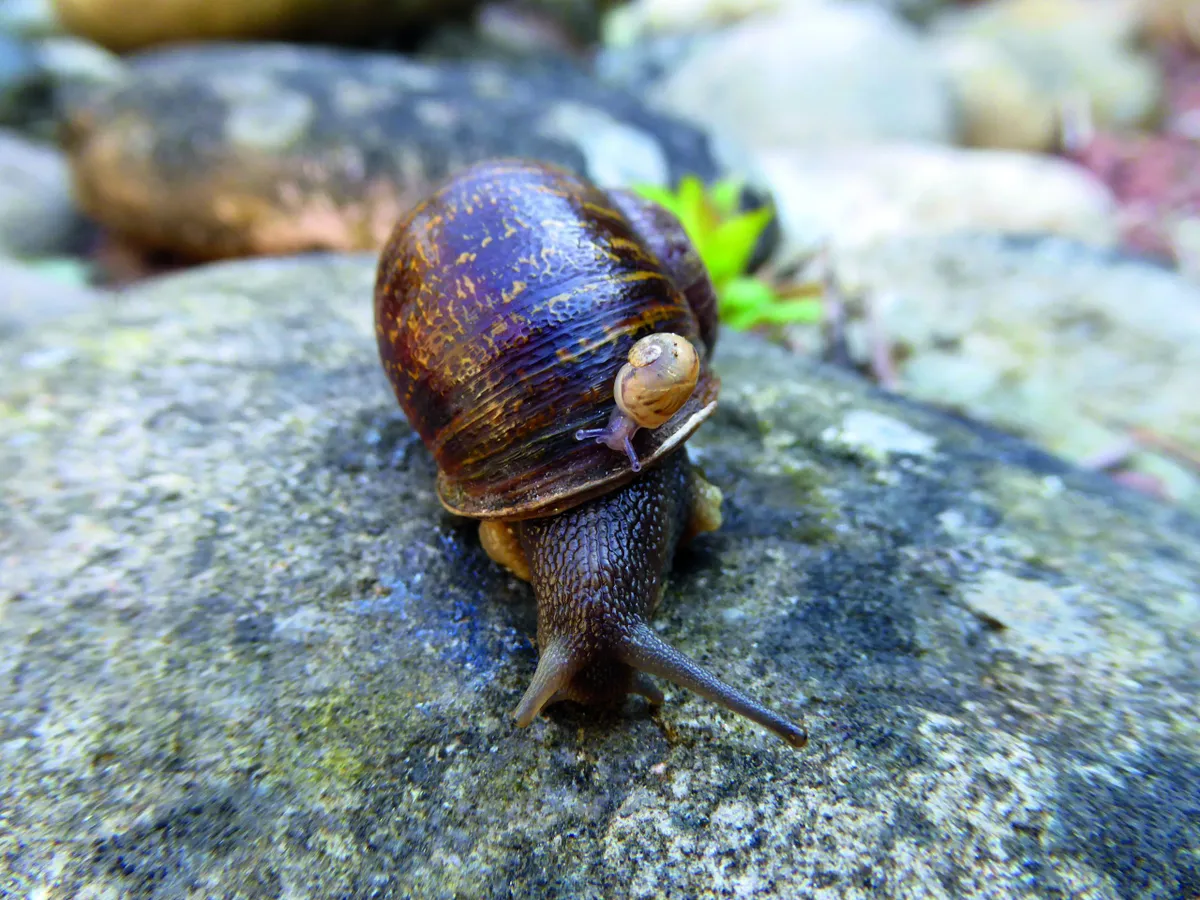While most animals are superficially symmetrical, there are almost always subtle differences between left and right: the arrangement of the internal organs; which hand one prefers to hold a pen with; the direction in which a shell coils.
“I’d never come across a leftcoiling garden snail before,” says Angus Davison, a University of Nottingham biologist, who took custody of the London specimen. The majority of garden snails are right-handed, meaning their shells coil in a clockwise direction. Only about one in 40,000 snails are ‘lefties’.
Part of the reason for their rarity is that the arrangement of their shells and genitalia makes mating with a right-hander almost impossible.
“To study the genetics, we needed to find it a left-handed mate,” says Davison. “There was a eureka moment when we realised we could get the public to help us.”
Jeremy, as the snail was named (after that other famous lefty, Mr Corbyn), found him/herself (snails are hermaphrodites) thrust into the limelight on social media and even Radio 4’s Today programme in an attempt to inspire the search.
“It actually worked,” says Davison. Lefties were soon arriving from amateur naturalists across Europe. “At which point I was committed to a snail breeding programme for three years.”

Davison has now published the results of those endeavours, which shows little genetic influence on the direction of coiling. In which case, what is it that makes the likes of Jeremy stand out from the crowd? Davison believes it’s due to an unlikely accident early in the snail’s development.
He likens it to an old-fashioned spiral telephone lead: “Stretch it out fully and release it, and it can coil up again in the opposite direction.”
Davison is keen to dig deeper still. And for that, he’ll need more lefty snails: “At very least, please take a look at your snails before you chuck them over the garden wall.”
Read the full paper in Biology Letters.
Main image: Sinistral Jeremyl on top of a dextral snail. © Angus Davison/University of Nottingham
